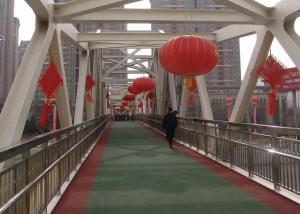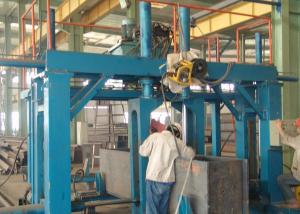City Overpass Steel Structure
- Loading Port:
- Tianjin Port
- Payment Terms:
- TT or LC
- Min Order Qty:
- 10000 square meters m.t.
- Supply Capability:
- 50000 Square Meters/ Month m.t./month
OKorder Service Pledge
OKorder Financial Service
You Might Also Like
Specifications of city overpass steel structure
Project type: city overpass
Bridge height: 5M
Span: 60M
Design load: crowd 4.5KN/M2, one-side handrail 5.0 KN/m
Structure type: the main bridge is continuous girder bridge, with one stairway at both ends. The main bridge adopts three-span layout. Stairways are made of continuous steel girder structure.
1. GB standard material
2. High Structural safety and reliability
3. The production can reach GB/JIS/ISO/ASME standard
Packaging & Delivery of city overpass steel structure
1. According to the project design and the component size, usually the main component parts are nude packing and shipped by bulk vessel. And the small parts are packed in box or suitable packages and shipped by containers.
2. This will be communicated and negotiated with buyer according to the design.
Engineering Design Software of city overpass steel structure
Tekla Structure \ AUTO CAD \ PKPM software etc
⊙Complex spatial structure project detailed design
⊙Construct 3D-model and structure analysis. ensure the accuracy of the workshop drawings
⊙Steel structure detail ,project management, automatic Shop Drawing, BOM table automatic generation system.
⊙Control the whole structure design process, we can obtain higher efficiency and better results
Technical support of city overpass steel structure
|
Worker |
Rate of frontline workers with certificate on duty reaches 100% |
|
Welder |
186 welders got AWS & ASME qualification 124 welders got JIS qualification 56 welders got DNV &BV qualification |
|
Technical inspector |
40 inspectors with UT 2 certificate 10 inspectors with RT 2 certificate 12 inspectors with MT 2 certificate 3 inspectors with UT3 certificate |
|
Engineer |
21 engineers with senior title 49 engineers with medium title 70 engineers with primary title. 61 First-Class Construction Engineers 182 Second-Class Construction Engineers |
|
International certification |
10 engineers with International Welding engineer, 8 engineers with CWI. |
Production Flow of steel structure/steel frame/steel construction
Material preparation—cutting—fitting up—welding—component correction—rust removal—paint coating—packing—to storage and transportation (each process has the relevant inspection)
Usage/Applications of steel structure/steel frame/steel construction
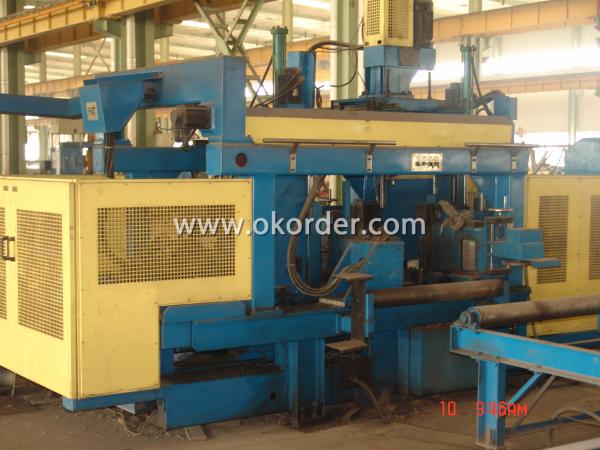
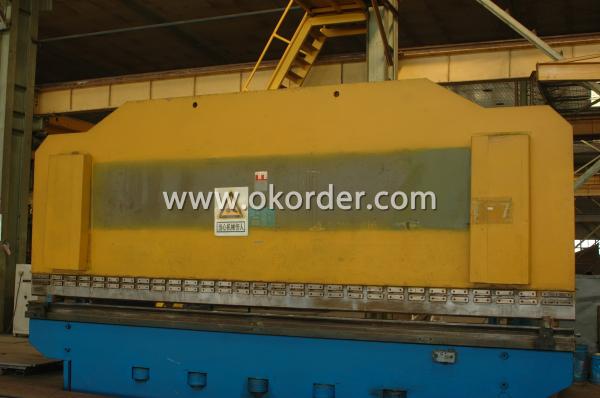
*Characters of Structure Steel
1. Steel is characterized by high strength, light weight, good rigidity, strong deformation capacity, so it is suitable for construction of large-span, super high and super-heavy buildings particularly;
2. It with good homogeneous and isotropic, is an ideal elastomer which perfectly fits the application of general engineering;
3. The material has good ductility and toughness, so it can have large deformation and it can well withstand dynamic loads;
4. Steel structure’s construction period is short;
5. Steel structure has high degree of industrialization and can realize-specialized production with high level of mechanization.
*Steel structure application
1. Heavy industrial plants: relatively large span and column spacing; with a heavy duty crane or large-tonnage cranes; or plants with 2 to 3 layers cranes; as well as some high-temperature workshop should adopt steel crane beams, steel components, steel roof, steel columns, etc. up to the whole structure.
2. Large span structure: the greater the span of the structure, the more significant economic benefits will have by reducing the weight of the structure
3. Towering structures and high-rise buildings: the towering structure, including high-voltage transmission line towers, substation structure, radio and television emission towers and masts, etc. These structures are mainly exposed to the wind load. Besides of its light weight and easy installation, structure steel can bring upon with more economic returns by reducing the wind load through its high-strength and smaller member section.
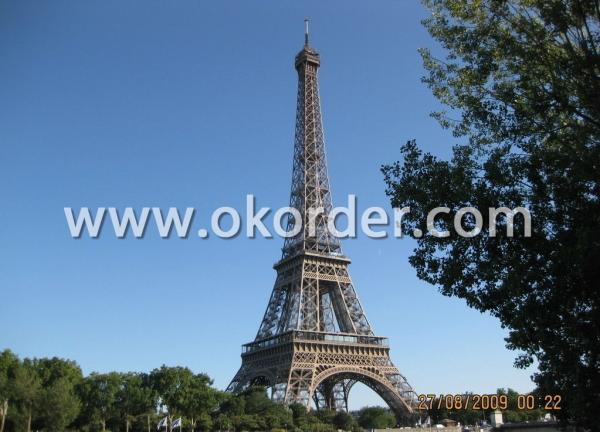
4. Structure under dynamic loads: As steel with good dynamic performance and toughness, so it can be used directly to crane beam bearing a greater or larger span bridge crane
5. Removable and mobile structures: Structure Steel can also apply to movable Exhibition hall and prefabricated house etc by virtue of its light weight, bolt connection, easy installation and uninstallation. In case of construction machinery, it is a must to use structure steel so as to reduce the structural weight.
6. Containers and pipes: the high-pressure pipe and pipeline, gas tank and boiler are all made of steel for the sake of its high strength and leakproofness
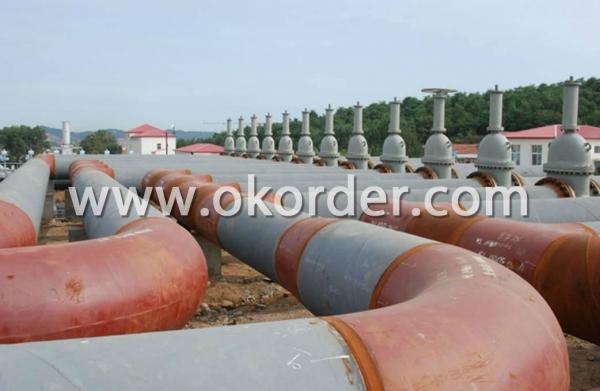
7. Light steel structure: light steel structures and portal frame structure combined with single angle or thin-walled structural steel with the advantages of light weight, build fast and steel saving etc., in recent years has been widely used.
8. Other buildings: Transport Corridor, trestle and various pipeline support frame, as well as blast furnaces and boilers frameworks are usually made of steel structure.
All in all, according to the reality, structure steel is widely used for high, large, heavy and light construction.
- Q:What are the typical design considerations for steel bridges?
- Some typical design considerations for steel bridges include load capacity, structural integrity, durability, ease of construction and maintenance, aesthetic appeal, environmental impact, and cost-effectiveness.
- Q:How do steel structures perform in terms of energy efficiency?
- Steel structures are known for their excellent energy efficiency. They have a high thermal mass, which means they can effectively absorb and store heat, reducing the need for additional heating or cooling. Additionally, steel structures can be designed with insulation materials to further enhance their energy efficiency. Overall, steel structures are a sustainable choice that can significantly contribute to energy savings.
- Q:How are steel structures used in residential complexes?
- Residential complexes often utilize steel structures for a variety of reasons. Firstly, steel is renowned for its durability and strength, enabling it to withstand even the harshest weather conditions and natural disasters. This reliability makes it an excellent option for constructing buildings that need to endure the test of time. Additionally, this strength allows for larger open spaces and fewer load-bearing walls, granting residents greater freedom in terms of interior design and layout. Furthermore, steel structures boast exceptional precision and accuracy during the construction process, guaranteeing that the building is constructed to exact specifications. This precision results in quicker construction times, reducing costs and minimizing disruptions for residents. Moreover, steel structures possess excellent fire resistance properties, providing an extra layer of safety for residents. Steel is also an environmentally friendly material due to its recyclability, lessening the environmental impact of construction. This aligns with the growing focus on sustainable and green building practices, making steel an eco-conscious choice for residential complexes. Moreover, steel structures offer versatility in terms of architectural design. The utilization of steel permits the creation of unique and innovative building shapes and features, enhancing the visual appeal of residential complexes. Steel can be easily combined with other materials such as glass or concrete, resulting in a modern and visually stunning appearance. In conclusion, steel structures in residential complexes provide strength, durability, precision, fire resistance, sustainability, and design flexibility. These qualities make steel an ideal choice for constructing safe, efficient, and visually appealing residential buildings.
- Q:How are steel structures used in cultural and performing arts centers?
- Steel structures are commonly used in cultural and performing arts centers for their strength, durability, and flexibility. They provide the necessary support for large open spaces, allowing for expansive auditoriums and exhibition halls. Steel is also used for framing stages and rigging systems, enabling the safe execution of elaborate set designs and lighting arrangements. Moreover, steel's ability to span long distances without additional support columns allows for unobstructed views for the audience. Overall, steel structures play a crucial role in creating functional and visually appealing spaces in cultural and performing arts centers.
- Q:What are the considerations for steel structures in areas prone to hurricanes?
- Some considerations for steel structures in areas prone to hurricanes include the selection of appropriate steel grades and coatings to withstand high winds and saltwater exposure, the design of structural connections to ensure resistance against lateral loads, the use of hurricane-resistant design codes and guidelines, and the implementation of proper construction and maintenance practices to ensure structural integrity. Additionally, incorporating storm-resistant features such as reinforced roofs, impact-resistant windows, and proper anchoring systems can help mitigate hurricane damage to steel structures.
- Q:How is steel manufactured for use in construction?
- Steel is manufactured for use in construction through a process called steelmaking, which involves the conversion of iron ore into steel. The primary method used is the basic oxygen furnace (BOF), where iron ore, along with other materials like coal and limestone, is melted in a furnace to remove impurities. This molten iron is then combined with recycled steel and alloying elements to control its properties. The resulting steel is then cast into various shapes, such as beams or plates, and undergoes further treatments like heat treatment or galvanization before being used in construction.
- Q:What are the considerations for designing steel structures for data centers?
- Some considerations for designing steel structures for data centers include the load-bearing capacity of the steel to support heavy equipment, the ability to accommodate future expansion and upgrades, the integration of fire suppression and cooling systems, the inclusion of appropriate electrical grounding and lightning protection measures, and the incorporation of security features to protect sensitive data. Additionally, the design should prioritize efficient airflow management and provide adequate space for cable management and accessibility for maintenance and repairs.
- Q:How are steel structures designed to be resistant to electromagnetic interference?
- There are several ways to design steel structures to resist electromagnetic interference (EMI). The first method involves using steel as the primary construction material, which naturally shields against electromagnetic waves due to its high electrical conductivity. This allows steel to effectively absorb and dissipate electromagnetic energy. To further enhance EMI resistance, additional strategies can be implemented during the design and construction phases. One common approach is to create a Faraday cage effect by enclosing sensitive equipment or areas within steel structures. This involves using conductive material to block external electromagnetic fields from entering the protected space. Another important aspect is designing steel structures with proper grounding systems. These systems ensure that any electromagnetic energy induced or conducted within the structure is directed and dissipated safely to the earth. This minimizes the impact on sensitive electronic devices. The layout and placement of electrical and communication cables within steel structures also require careful consideration. Shielding or routing these cables away from potential sources of electromagnetic interference can reduce the risk of signal degradation or disruption. In addition to these design measures, it is necessary to periodically test and maintain the electromagnetic shielding effectiveness of the steel structure. This involves using specialized equipment to measure its effectiveness and identify areas for improvement. Overall, by utilizing steel as a construction material, implementing appropriate shielding techniques, and maintaining proper grounding systems and cable routing, steel structures can be designed to resist electromagnetic interference and provide a secure and dependable environment for sensitive electronic equipment.
- Q:What are the considerations for designing steel structures in areas with high wind-borne debris?
- When designing steel structures in areas with high wind-borne debris, there are several considerations that need to be taken into account. First and foremost, the structural integrity of the steel elements must be reinforced to withstand the impact of flying debris. This can involve using thicker or reinforced steel members, as well as implementing additional bracing and connections. Another key consideration is the design of the building envelope, including windows, doors, and other openings. These elements should be designed to resist the impact of debris and prevent it from penetrating the structure. This may involve using impact-resistant glazing or installing protective screens or shutters. Additionally, the overall design of the structure should incorporate a robust and continuous load path, ensuring that the forces generated by wind-borne debris are effectively transferred through the building and into the foundation. This can be achieved through careful detailing and the use of appropriate connections and fasteners. Finally, it is important to comply with local building codes and regulations that specifically address wind-borne debris. These codes often provide guidance on minimum design criteria and material specifications to ensure the safety and resilience of structures in high-risk areas. Overall, designing steel structures in areas with high wind-borne debris requires a comprehensive approach that addresses the unique challenges posed by these conditions, aiming to minimize damage and provide a safe and durable building.
- Q:What are the design considerations for steel structures in educational buildings?
- Some key design considerations for steel structures in educational buildings include the need for durability and longevity, as these buildings are often intended to be in use for many years. Steel structures should also be designed to withstand the specific load requirements of educational facilities, which can vary depending on the type of building and its intended use. Additionally, consideration should be given to the flexibility of the steel structure, allowing for future expansions or renovations as educational needs evolve. Aesthetics and integration with the overall architectural design of the building are also important factors to consider. Finally, sustainability and energy efficiency should be taken into account, with the use of steel in construction offering the potential for reduced environmental impact through the use of recycled materials and energy-efficient design strategies.
1. Manufacturer Overview |
|
|---|---|
| Location | SHANDONG,China |
| Year Established | 2008 |
| Annual Output Value | Above US$20 Billion |
| Main Markets | WEST AFRICA,INDIA,JAPAN,AMERICA |
| Company Certifications | ISO9001:2008;ISO14001:2004 |
2. Manufacturer Certificates |
|
|---|---|
| a) Certification Name | |
| Range | |
| Reference | |
| Validity Period | |
3. Manufacturer Capability |
|
|---|---|
| a)Trade Capacity | |
| Nearest Port | TIANJIN PORT/ QINGDAO PORT |
| Export Percentage | 0.6 |
| No.of Employees in Trade Department | 3400 People |
| Language Spoken: | English;Chinese |
| b)Factory Information | |
| Factory Size: | Above 150,000 square meters |
| No. of Production Lines | Above 10 |
| Contract Manufacturing | OEM Service Offered;Design Service Offered |
| Product Price Range | Average, High |
Send your message to us
City Overpass Steel Structure
- Loading Port:
- Tianjin Port
- Payment Terms:
- TT or LC
- Min Order Qty:
- 10000 square meters m.t.
- Supply Capability:
- 50000 Square Meters/ Month m.t./month
OKorder Service Pledge
OKorder Financial Service
Similar products
New products
Hot products
Related keywords

